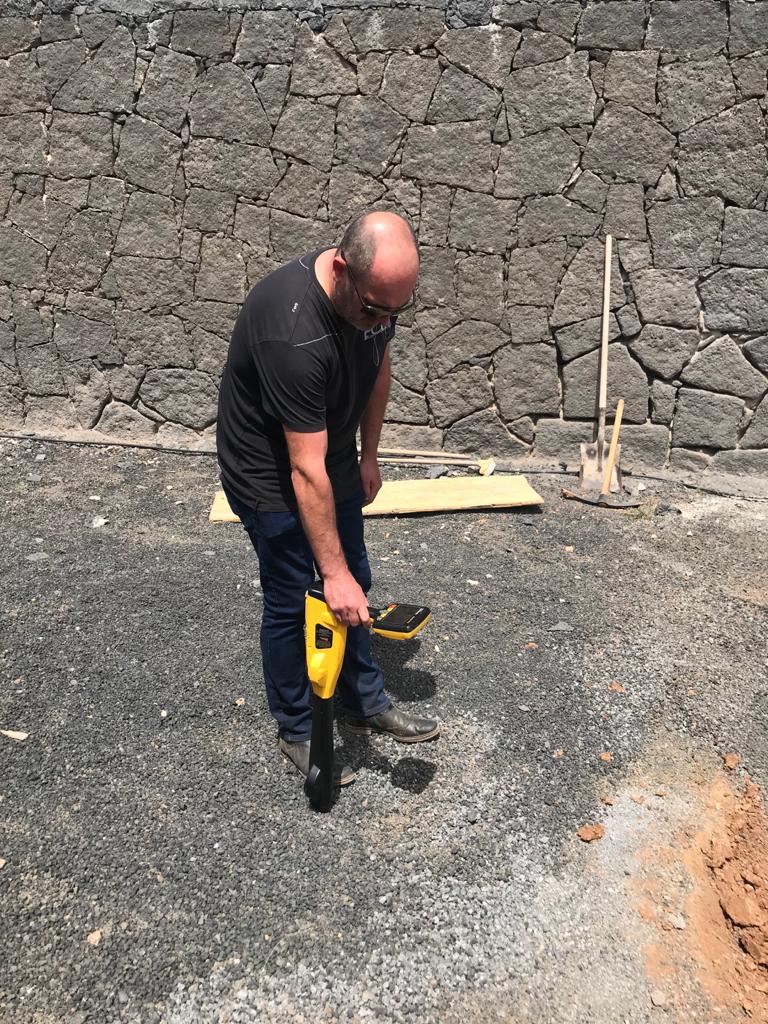Lanzarote is a beautiful island located in the Canary Islands of Spain and is known for its stunning landscapes, unique volcanic formations, and vibrant marine life. With such a diverse landscape, it is essential to have an efficient and effective infrastructure, including a reliable underground pipe system.
The underground pipe network in Lanzarote is responsible for carrying water, sewage, and other utilities throughout the island. Over time, these pipes can become damaged or clogged, causing significant problems for the island’s inhabitants. In order to avoid such issues, it is essential to have an accurate and reliable method for pipe detection.
One of the most effective methods of pipe detection is through the use of ground-penetrating radar (GPR). GPR is a non-invasive technique that uses electromagnetic radiation to penetrate the ground and create a three-dimensional image of subsurface structures. This technology can detect the presence of buried pipes and determine their location, depth, and orientation.
The GPR system that we use at Canary Detect consists of a control unit, a transmitting antenna, and a receiving antenna. The transmitting antenna sends electromagnetic waves into the ground, which bounce off any objects they encounter and return to the receiving antenna. By measuring the time that it takes for the waves to bounce back, the GPR system can create a detailed image of the subsurface.
Initially we need to undertake a survey of the area. This involves a thorough analysis of the topography and geology of the area concerned, as well as any existing maps or plans of the underground infrastructure. Once that is complete, our GPR system is brought in to begin scanning the area.
The GPR system works best on flat, even surfaces, and the system is calibrated to the specific conditions of the area being scanned. Once the calibration is complete, the transmitting antenna is placed on the ground and the system is activated.
As our GPR system scans the area, it creates a detailed image of the subsurface. Any buried pipes or other objects will appear as anomalies in the image, allowing our technician to pinpoint their location and depth. Once the pipes have been located, they can be marked on the ground to make it easier to access them for repairs or maintenance.
Several Advantages
The use of GPR technology for underground pipe detection in Lanzarote has several advantages. Firstly, it is non-invasive, which means that it does not require any excavation or disturbance of the ground. This is particularly important in areas with delicate ecosystems or historical significance.
Secondly, it is extremely accurate, with the ability to detect pipes to within a few centimeters of their actual location. This allows for precise repairs and maintenance, reducing the risk of damage to other underground infrastructure. Finally, GPR is a fast and cost-effective method for detecting underground pipes, allowing for efficient and timely repairs.
In conclusion, the use of ground-penetrating radar technology for underground pipe detection in Lanzarote is an essential tool for maintaining the island’s infrastructure. It provides an accurate and non-invasive method for detecting the location, depth, and orientation of buried pipes, allowing for efficient repairs and maintenance. With the use of our GPR, we can continue to provide Lanzarote residents with reliable and efficient underground infrastructure while preserving the island’s unique natural and cultural heritage.

